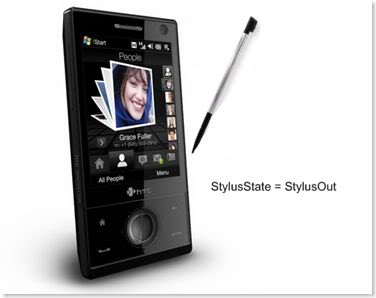


5. History, how things started
The first official ROM's suffered from memory leaks. But after version 1.93, this sort of problems was gone. Actually, I do not use the TouchFlo3D interface, I use just the Windows Mobile Today screen. And of course, the advantage of a Windows Mobile device and the Touch Diamond, you can do a lot of tweaking. Of course then XDA-Developers is the place to learn about tweaking and programs for your phone.
I wanted to learn Windows Mobile programming. So I came across a locking program which uses gestures for locking/unlocking. Surfsmurf, author of SensorLock posted the source code of that locking program. I did some small changes in the source code of SensorLock and surfsmurf integrated my improvements in subsequent versions of SensorLock.
Then I started with my own different approach, locking with the Stylus only, resulting into StylusLock. Other locking solutions now also supports unlocking with the Stylus. More improvements were made by me, a BattClock was introduced in StylusLock. The disadvantage of StylusLock was that you could not unlock the phone one handed. So I started to think how to unlock by different means. By introducing it, I gave StylusLock a different name, TouchLockPro, because it was no longer operating with the Stylus alone and it was also working on other types of phones. The Light Sensor will automatically unlock when the lighting conditions are not too dark. In too dark conditions, you can use the hidden feature of the Touch Diamond and Pro, namely a capacitive touch sensitive area above the hardware keys. This area will not react on e.g. stylus touches, but will detect finger touches. This is demonstrated in a Youtube video, showing the HTC's Nav Debug Tool. I made a proof of concept CapacitiveFingerLock (with source code).
I also posted the source code (see download section). Hope you will learn something from it and you are inspired to make great programs too. At the end programming Windows Mobile is not so difficult if you have programming experience. Prerequisites for programming:
See Smart Development for what is supported by which version. I used myself Visual Studio 2008 Professional SP1. Also check the Development Resources for Windows Mobile (on the Development and Hacking XDA thread) Note that TouchLockPro is written in C++ and TouchLockAction in C# (and deployed using .NET Framework 2.0).
Enjoy the software and source code (see download section).